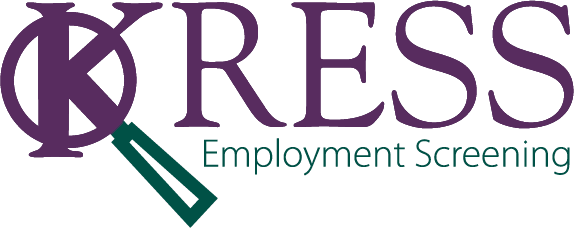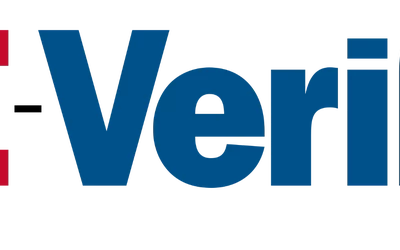Most employers check job candidates before hiring them, which makes sense when you consider what's at stake.
A bad hire can damage your company in multiple ways. They might steal. They might hurt other employees. They might lie about their qualifications and fail at business-critical tasks.
That's why pre-employment background checks have become standard practice. They help you verify what candidates tell you about their past.
But many employers don't understand how background checks actually work. They don't know what to look for in a screening company. They don't know their legal obligations.
This guide explains everything you need to know about employment background checks.

What Is a Background Check?
The background check process looks into someone's past. Put simply, you're trying to verify if they told the truth on their application. Conducting background checks helps you figure out if someone is qualified for the job and if they're a good fit. They also help spot people who lie about their experience.
What you check depends on the job. For example, a part-time worker needs different screening than someone who handles company finances.
Worryingly, many background screening companies just run database searches and call it done. They're increasingly becoming too reliant on AI and not taking the time or the effort to manually verify the information they find. That's not enough. You need experienced, diligent people dedicated to accuracy.
Why Do Background Checks Matter?
Studies have shown up to 70% of people lie on their resume. People lie on job applications. They lie about their education. They lie about their work history. They also lie about criminal records.
When dishonest people become employees, problems tend to follow. They might steal from you. They might hurt other workers. They might even get you sued.
Background screening services help to keep workplaces safe. This especially matters for jobs involving heavy machinery, driving, or working with vulnerable people.
Some laws require background checks for certain jobs. Skip the required checks, and you face hefty fines. You also risk negligent hiring claims if an employee with a problematic history harms someone and you didn't properly screen them.

Types of Background Checks
The types of background check/employment screening services you perform will depend on the industry you're in, the role you're hiring for, your internal screening policy as well as federal, state and local laws.
Criminal background checks are designed to find misdemeanor and felony convicions, arrests and any pending criminal cases that could cause workplace problems by searching public records from federal, state, and local courts.
Employment verification confirms a candidate's work history with previous employers.
Education verification verifies degrees and certifications are genuine, and that the candidate attended the schools they claim to.
Driving records (MVR) checks are required when employees will drive for work. These checks show motor-related offenses and convictions (such as DUIs), license type and status, license suspensions, to help determine driving safety for transportation-related positions.
Drug testing screens for alcohol and controlled substances to support safe and drug-free workplaces. Testing requirements vary by industry and position type.
Credit history checks show how someone handles money and should only be used for jobs involving finances or sensitive information.
Professional license verification confirms that professional licenses and certifications are current and valid. This matters in healthcare, construction, and other regulated fields where outdated licenses can create serious compliance issues.
Identity verification confirms that candidates are who they claim to be by checking personal data against public records, Social Security details, and address history. This helps prevent identity theft and ensures you're screening the right person.
How Do Background Checks Work?
Getting Permission
The applicant interviews, completes the employer’s application, and signs the release for a background check. You must tell them upfront about the background check and get written permission. The Fair Credit Reporting Act requires this.
Processing the Order
You tell us what services you need. We route orders to specialists who handle specific types of screening.
Investigation
Many screening companies just run database searches. We use specialized departments for different screening types. Each department specializes in specific services in order to get the best research and the fastest results. Our researchers work nationwide, covering every county. We verify information matches your candidate using multiple criteria.
KRESS’ driving history, INS/SSA, drug testing, criminal/civil, and verifications departments work together to check every fact.
Creating the Background Check Report
The completed report is generated and sent to the employer via customized routing solutions.
Before an applicant’s information makes it to an employer, KRESS ensures that only records that are an exact match with the candidate are on the report (matched by three criteria by human eyes).
Your Employment Decision
You review the report and decide whether to hire the candidate. If there's concerning information that leads to adverse action, there are specific steps you need to take.

Legal Requirements
Fair Credit Reporting Act
The FCRA controls how background checks work. You need written permission from candidates, you must follow specific disclosure steps, and you must handle rejections correctly.
Breaking FCRA rules creates serious legal problems.
Adverse Action Process
If you decide not to hire someone because of their background check, you must follow a two-step process. KRESS offers automated tools to help with this compliance.
- Pre-Adverse Action Notice: Client clicks a button and the pre-adverse action letter is sent to the applicant with a copy of the report and a copy of their rights.
- Adverse Action Letter: After 14 days pass, the second letter is sent saying they will not be hired because of what was found in the report.
Anti-Discrimination Rules
The Equal Employment Opportunity Commission sets rules about fair screening practices. Your background checks can't unfairly target protected groups.
You must treat all candidates consistently. You can't run different checks based on race, gender, or other protected characteristics. Title VII of the Civil Rights Act provides the foundation for these protections.
State and Local Laws
Federal laws set the baseline, but states and cities also apply their own rules. These can be much stricter than federal requirements.
Many states have "ban-the-box" laws that prevent asking about criminal history on job applications. You can only ask after making a conditional job offer. States like California, New York, and Illinois have these rules. So do major cities like Chicago, Philadelphia, and Los Angeles.
Some states limit how far back you can check criminal records when performing criminal background checks, or what types of convictions matter for hiring decisions. The rules change frequently, so stay updated on laws where you operate.
Industry-Specific Requirements
Regulated industries face additional compliance layers on top of general employment laws.
- In Financial Services, you face enhanced scrutiny from FINRA, FDIC, and state banking regulators. FINRA Rule 3110(e) requires extensive public record checks. Section 19 of the FDIC Act bars anyone with dishonesty or breach of trust convictions from working at FDIC-insured banks. These regulatory requirements often override state ban-the-box rules.
- Healthcare employers must check OIG and SAM exclusion lists to avoid hiring individuals barred from Medicare/Medicaid participation. Failure can result in penalties and loss of federal funding. State laws often mandate fingerprint-based criminal checks and periodic rescreening.
- For Transportation roles, DOT and PHMSA set pre-employment and random testing requirements for safety-sensitive positions. Noncompliance can result in severe civil penalties and lost contracts.
- Oil & Gas, Construction & Manufacturing employers must comply with OSHA requirements for safety training verification while navigating state ban-the-box laws. Drug testing is standard but faces restrictions in some states.
In regulated industries, compliance failures can lead to loss of licensure, federal funding, or criminal penalties. Regulatory agency rules often supersede general employment laws.
Choosing a Background Check Company
What to Look For
Pick a company based on your hiring needs, budget, and location. Good screening companies provide fast, accurate results with real customer service.
Look for companies that verify information, not just run database searches. Find providers who understand your industry's specific requirements.
Red Flags
Many screening companies ignore smaller businesses. This leads to poor service and delayed results.
Avoid companies that only run database searches. Avoid providers with slow customer service. Avoid companies that can't explain their process clearly.
Our Approach at KRESS
We combine database searches with human verification. Every screening gets both technology and people checking the facts.
We treat candidates fairly and give employers complete, accurate information. No waiting weeks for results. No unanswered phone calls.
Best Practices
Write Clear Policies
Create written background check policies that explain which jobs require screening, what types of checks you'll run, and how you'll handle concerning information.
Apply your policies consistently to all candidates.
Communicate with Candidates
Keep candidates informed about your screening process - tell them what checks you'll run, how long it takes, and what their rights are.
How Should Candidates Prepare for Background Checks?
Golden rules:
- Be honest on applications!
- Keep accurate records of your education and employment history.
- Make sure you contact your professional references to let them know you've included them in your application.
- Submit information accurately to speed up the screening process.
- Review your licenses before applying.
Candidates have specific rights during background checks:
- You can see your background report if it leads to adverse action.
- You can dispute wrong information.
- You can understand how employers use the information.
Common Myths about Background Checks
"All Screening Companies Are the Same"
Some companies rely heavily on database searches, while others provide complete verification through human research.
The difference shows up in accuracy and completeness, and overall leads to a more effective hiring process.
"Faster Is Always Better"
Speed matters, but accuracy matters more. Wrong reports lead to bad hiring decisions and legal problems.
"Background Checks Cost Too Much"
A thorough background check costs much less than a bad hire. Bad employees create turnover costs, training expenses, and legal problems.
Looking Ahead
Regulations keep changing and technology is advancing. But the core principle stays the same: providing accurate, timely screening that helps employers make good hiring decisions.
Companies that invest in quality background screening protect their organizations, employees, and customers. The key is choosing a provider who understands your industry and delivers accurate results consistently (like us!).
Final Thoughts
Employment background checks are an important part of smart hiring. They protect your business, help maintain safety, and give you the best chance of making better hiring decisions.
Success depends on choosing the right provider and following best practices.
At KRESS, we understand today's hiring challenges. We combine technology with human verification to give you accurate, complete information about candidates. No delays. No poor service.
Background Screening FAQs
How long does a background check take?
KRESS delivers 98% of background checks within 24hrs. It can 2-3 business days for some background checks, contact our team for more information.
What is the difference between a background check and screening?
Pre-employment screening refers to the broader process and may include background checks, as well other assessments to make sure the candidate is a good fit.
What happens during a background check?
Different information gets verified based on job requirements. This may include criminal history, work history, education verification, driving records, and credit history. The process involves searching records and verifying information through direct contact. Download our complete infographic showing the life of a background check.
What will disqualify someone on a background check?
Disqualifying factors vary by employer and job type. Common issues include recent criminal convictions related to the job, false application information, or not meeting specific requirements like valid licenses.
Each employer sets criteria based on job duties and risk assessment.
What do most employers use for background checks?
Most employers use third-party screening providers rather than doing checks internally. These services typically include criminal checks, employment verification, and education verification. Specific checks vary based on industry requirements and job responsibilities.









